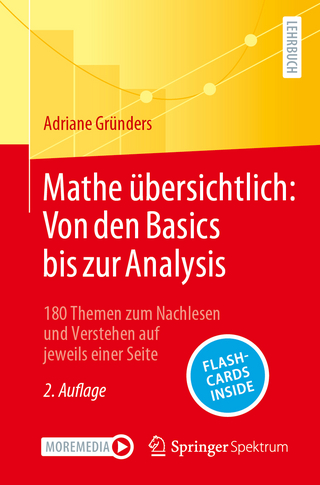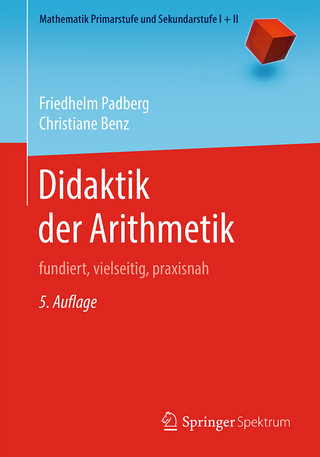
Neural–Based Orthogonal Data Fitting
Wiley-Blackwell (an imprint of John Wiley & Sons Ltd) (Verlag)
978-0-471-32270-2 (ISBN)
- Titel ist leider vergriffen;
keine Neuauflage - Artikel merken
Written by two leaders in the field of neural based algorithms, Neural Based Orthogonal Data Fitting proposes several neural networks, all endowed with a complete theory which not only explains their behavior, but also compares them with the existing neural and traditional algorithms. The algorithms are studied from different points of view, including: as a differential geometry problem, as a dynamic problem, as a stochastic problem, and as a numerical problem. All algorithms have also been analyzed on real time problems (large dimensional data matrices) and have shown accurate solutions. Where most books on the subject are dedicated to PCA (principal component analysis) and consider MCA (minor component analysis) as simply a consequence, this is the fist book to start from the MCA problem and arrive at important conclusions about the PCA problem.
GIANSALVO CIRRINCIONE, PD, is an assistant professor at the University of Picardie-Jules Verne, Amiens, France. His current research interests are neural networks, data analysis, computer vision, intelligent control, applied mathematics, brain models, and system identification. E-mail address: exin@u-picardie.fr MAURIZIO CIRRINCIONE, PD, is a full professor of control and signal processing at the University of Technology of Belfort-Montbeliard, France. His current research interests are neural networks, modeling and control, system identification, data analysis, intelligent control, and electrical machines and drives. E-mail address: maurizio.cirrincione@utbm.fr
Foreword. Preface. 1 The Total Least Squares Problems. 1.1 Introduction. 1.2 Some TLS Applications. 1.3 Preliminaries. 1.4 Ordinary Least Squares Problems. 1.5 Basic TLS Problem. 1.6 Multidimensional TLS Problem. 1.7 Nongeneric Unidimensional TLS Problem. 1.8 Mixed OLS-TLS Problem. 1.9 Algebraic Comparisons Between TLS and OLS. 1.10 Statistical Properties and Validity. 1.11 Basic Data Least Squares Problem. 1.12 The Partial TLS Algorithm. 1.13 Iterative Computation Methods. 1.14 Rayleigh Quotient Minimization Non Neural and Neural Methods. 2 The MCA EXIN Neuron. 2.1 The Rayleigh Quotient. 2.2 The Minor Component Analysis. 2.3 The MCA EXIN Linear Neuron. 2.4 The Rayleigh Quotient Gradient Flows. 2.5 The MCA EXIN ODE Stability Analysis. 2.6 Dynamics of the MCA Neurons. 2.7 Fluctuations (Dynamic Stability) and Learning Rate. 2.8 Numerical Considerations. 2.9 TLS Hyperplane Fitting. 2.10 Simulations for the MCA EXIN Neuron. 2.11 Conclusions. 3 Variants of the MCA EXIN Neuron. 3.1 High-Order MCA Neurons. 3.2 The Robust MCA EXIN Nonlinear Neuron (NMCA EXIN). 3.3 Extensions of the Neural MCA. 4 Introduction to the TLS EXIN Neuron. 4.1 From MCA EXIN to TLS EXIN. 4.2 Deterministic Proof and Batch Mode. 4.3 Acceleration Techniques. 4.4 Comparison with TLS GAO. 4.5 A TLS Application: Adaptive IIR Filtering. 4.6 Numerical Considerations. 4.7 The TLS Cost Landscape: Geometric Approach. 4.8 First Considerations on the TLS Stability Analysis. 5 Generalization of Linear Regression Problems. 5.1 Introduction. 5.2 The Generalized Total Least Squares (GeTLS EXIN) Approach. 5.3 The GeTLS Stability Analysis. 5.4 Neural Nongeneric Unidimensional TLS. 5.5 Scheduling. 5.6 The Accelerated MCA EXIN Neuron (MCA EXIN+). 5.7 Further Considerations. 5.8 Simulations for the GeTLS EXIN Neuron. 6 The GeMCA EXIN Theory. 6.1 The GeMCA Approach. 6.2 Analysis of Matrix K. 6.3 Analysis of the Derivative of the Eigensystem of GeTLS EXIN. 6.4 Rank One Analysis Around the TLS Solution. 6.5 The GeMCA Spectra. 6.6 Qualitative Analysis of the Critical Points of the GeMCA EXIN Error Function. 6.7 Conclusion. References. Index.
| Erscheint lt. Verlag | 12.11.2010 |
|---|---|
| Reihe/Serie | Adaptive and Cognitive Dynamic Systems: Signal Processing, Learning, Communications and Control |
| Verlagsort | Chicester |
| Sprache | englisch |
| Maße | 164 x 245 mm |
| Gewicht | 578 g |
| Themenwelt | Mathematik / Informatik ► Mathematik |
| Technik ► Elektrotechnik / Energietechnik | |
| ISBN-10 | 0-471-32270-9 / 0471322709 |
| ISBN-13 | 978-0-471-32270-2 / 9780471322702 |
| Zustand | Neuware |
| Haben Sie eine Frage zum Produkt? |
aus dem Bereich


